This was published 4 years ago
Mesmerising, magical and crowd free: Why you should travel in winter
By Traveller writers
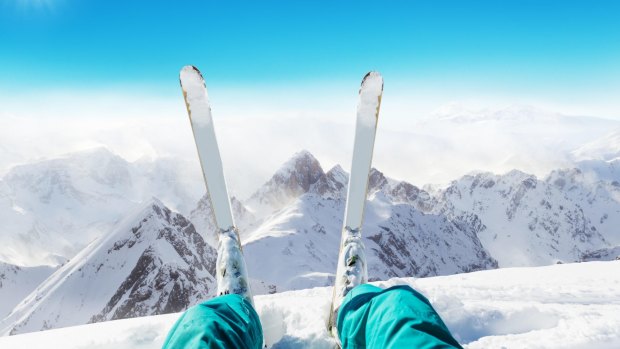
Winter tourism has experienced a marked rise.Credit: Alamy
There are two types of winter holiday, according to traditional wisdom. The sea-and-sun escape to a tropical island, or the family ski week. Avoiding the big chill, or embracing it, though only in order to slide down a hillside with two planks strapped to your feet.
But times are changing. As peak summer seasons get overcrowded and travellers increasingly turn to experiences rather than sightseeing, we're falling in love with climates in the cooler season. Even in places that don't experience a true winter of plummeting temperatures there are still jaw-dropping wonders of nature to experience.
Winter tourism has experienced a marked rise, in truly frigid destinations such as Iceland or Alaska. Christmas markets have proliferated. Trend watchers now have winter travel firmly on their hot lists.
There are plenty of reasons to embrace cold holidays. Cheaper hotels, fewer queues and a greater sense of adventure, for a start. Days are short, but illuminations and festivals brighten up the darkness. You'll have concerts, carols and carnivals to enliven your stay as well. And you can eat more on a winter holiday and feel fine. The cold sharpens the appetite – no wonder the Swedish invented the smorgasbord.
Then there's the chance to enjoy all those winter-wonderland cliches that Australians usually only see on Christmas cards, from sleigh rides to snowfall. Plus extraordinary natural phenomena such as the northern lights, frozen waterfalls and lakes you can walk across. Winter brings simple joys too like rolling snowmen and sledging. Or just staring up as snowflakes swirl down, fizzing on your eyebrows and lips.
True, Jack Frost will be nipping at your toes all the while, but you're never far from a warm hotel, a convivial apres-ski bar or a sauna. Folk from winter places know how to make winter enjoyable. Even if you're outside, you can make yourself tingle with a mulled wine or a bag of roasted chestnuts, bought as a hand-warmer from a street stall. Don't let the weather put you off. Embrace it and embrace the concept of hygge, the Danish qualities that take in cosiness and contentment.
- BRIAN JOHNSTON
CHRISTMAS IN ST PETERSBURG, RUSSIA
BY CATHERINE MARSHALL
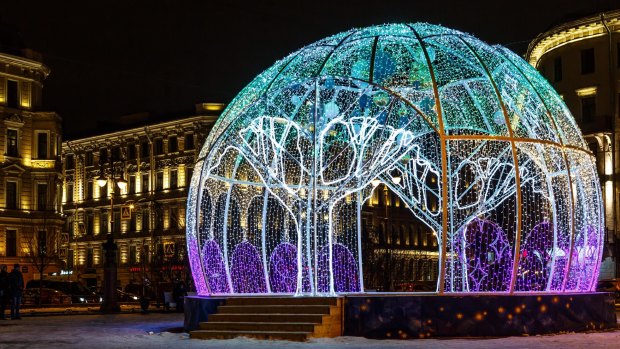
Credit: Alamy
We're trapped inside a snow globe. All around us fairylights wink in the darkness, Christmas trees glow on city squares, snow frosts the footpaths and rimes the branches of winter-stripped trees.
At the centre of it all is my family, peering into a glass sphere that sits upon a frozen fountain outside Kazan Cathedral. Inside its lit interior are Joseph and Mary and baby Jesus, safe against the cold. But the skies are clear; if someone would only shake our globe – and this smaller globe within it – we would be showered in snowflakes.
It's Christmas night, but though baby Jesus has made his appearance in the nativity scene, St Petersburg is not yet jubilant. Orthodox Russians follow the Julian calendar, and will celebrate Christmas on January 7. No matter; my family is exultant, for we've journeyed into an environment we assumed would be unendurable – and we're having the time of our lives. We will depart this place subtly changed – made more receptive, less provincial – by our immersion in a climate and culture so discordant with our own.
Cloaked against the cold, we stroll beside the Neva River, a frozen highway bisecting this once-imperial city. We find warm respite in the Hermitage – so effortless to access in low season – and sneak frequent glances away from its priceless art collection and through the windows facing Palace Square; it's almost empty down there except for the horse-drawn carriages beseeching scarce tourists and a grader levelling walls of snow. Few people visit in winter; they're oblivious to the season's enchantments.
We walk through parks leached of summer's colour but endowed with the singular beauty of winter: leafless birches up to their knees in snow, their white branches painted in whiter licks of snow; sheets of snow twinkling like shattered diamonds; a cold so visceral it shocks us back to life.
We skate on an open-air rink, the icy airflow burnishing our cheeks, and make our way along a frozen canal to a restaurant which serves us a Christmas dinner of borscht and beef stroganoff, Russian honey cake and plentiful shots of vodka.
Snow begins to fall on the walk back to our hotel. The flakes drift timidly at first, but soon we're engulfed in their butterfly kisses. Someone is shaking our snow globe, it seems; if they peer inside it, this is what they will see: a family having a snowball fight late at night in the middle of St Petersburg. They're laughing deliriously and raising their faces to the sky as the snowflakes swirl madly about them.
EATING FONDUE IN SWITZERLAND
By BEN GROUNDWATER
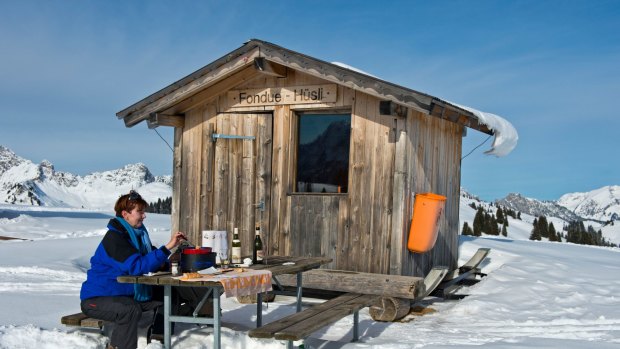
Credit: Alamy
Here's a truism of life that surely everyone will appreciate: you can't possibly make anything worse by adding cheese to it.
Take bread, add cheese to it, and you have pizza. Take wine and add cheese to it and you have romance. Take tobogganing and add cheese to it, meanwhile, and you have one of the most enjoyable evenings on the planet.
The setting is Alpiglen, a mountain hamlet in the heart of Switzerland, a cluster of wooden homes clinging to a snowy slope. It's bathed in a pastel twilight, the villages in the valley below beginning to twinkle as another winter day comes to an end.
One of those wooden homes is a restaurant, lined with long timber tables that will be creaking under the weight of the feast they already hold, of boiled potatoes, pickled vegetables, crusty bread, bottles of wine, glasses of beer, and cheese: bubbly, oozy, delicious cheese.
We're here for fondue, that most Swiss of winter dishes. In Alpiglen a selection of local mountain cheeses is melted and mixed with white wine and kirsch, the cherry brandy, before diners are encouraged to dip bread and potatoes into the molten result, those edible vessels emerging coated in rich, yellow goodness, ready to be devoured, ready to be washed down with a drink, ready for the diner to start the process again.
This is just the beginning, too. Fondue, tonight, is the stomach-filler, the winter warmer, the guard against the coming cold. Because outside, in the dark of night, our wooden toboggans are waiting stacked in the snow.
Soon we'll mop up the last dregs of fondue, stagger up into an upright position, pull on coats and gloves and beanies and wander out to collect those toboggans, to take them to the top of the floodlit track that leads from Alpiglen down to another hamlet called Brandegg.
We'll sit on the wooden sleds, point them downhill and lift our feet, crying out as we immediately pick up speed, digging our heels into the snow and hurling ourselves left and right to get around tight bends, squinting through the shower of churned snow that flies into the air.
It's a race: not to beat your friends, but to beat the clock. Make it to Brandegg within 10 minutes and you'll have time to race into the local guesthouse for a beer before the train departs back to Alpiglen, where it all began, and where it will begin again. Just add cheese.
THE AFRICAN MIGRATION
BY SUE WILLIAMS
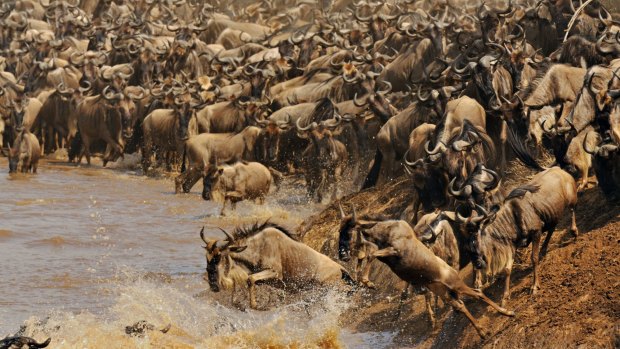
Credit: Alamy
You hear them before you see anything: thousands upon thousands of hooves drumming on the dry dirt, growing steadily louder, relentlessly nearer and more unnerving by the minute.
Suddenly, there's a wisp of what looks like smoke on the distant horizon. Then another. And another. Until the wafting columns all gradually meld and blur and grow into billowing clouds of grey dust.
Winter is coming. And so are the wildebeest.
The annual African migration of up to 2 million wildebeest north through the Tanzanian Serengeti to Kenya, often accompanied by vast dazzles of zebra and all varieties of antelope, is one of the last mass wildlife movements left on Earth.
As a result, it's also one of the greatest spectacles on the planet and, happening around June and July each year, creates an absolute winter wonderland.
Forget Game of Thrones and its mythical wall of ice. This is instead the season of a solid wall of writhing, thrashing, real-life animals, wild-eyed, hungry and all intent on one thing – reaching the green green grass on the other side of the Mara River.
The first time I saw it, I was dumbfounded by the sight. The wildebeest race and run and fight and skittle over each other in their eagerness to get to the fresh pastures up north while, on the hilltops above the 35 kilometre-long columns, the predatory lion, hyena and vultures lounge.
Looking for all the world as if they're lying in wait for their favourite titbit to pass by on what to them is simply one gigantic sushi train, you can never predict the moment they'll abruptly jump up, and pounce.
Their dishes are varied too. The zebra race alongside the wildebeest, always optimistic their shared enemies will choose to pick out the easier prey. And the antelope? Well, they're just along for the crazy ride.
The madness reaches a climax as the torrent of animals reaches the narrow river crossings. Here, some stop, presumably fearing the water, the crocs, the steep banks up and down, or all three. A few actually stop dead – literally – from the heart-straining, back-breaking effort.
But most charge on regardless, pounding down, splashing across and then, hopefully, emerging on the other side. As an observer, you want to cheer the courage, the determination, the sheer fortitude and the blind faith on plain display.
And in a world suffocating with artifice, it all feels so overpoweringly real and raw, I couldn't ever imagine any other winter sight full of such glorious content.
THE CARNIVAL IN VENICE
BY BRIAN JOHNSTON
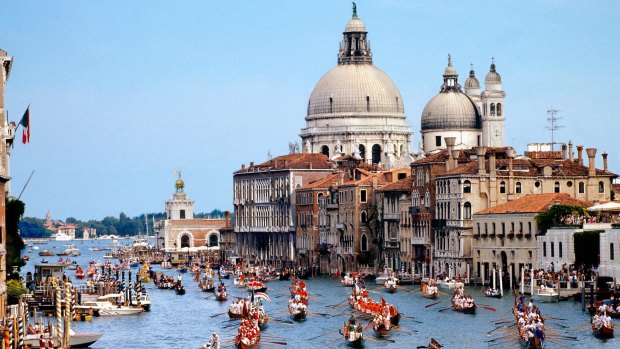
Credit: Alamy
As high tides nibble at the feet of ornate palaces and fog sets in, Venice in winter unfolds a particular charm. This isn't the place for kitschy European winter stereotypes of snow, Christmas trees and cracking fires. The atmosphere is moody and Byronic, the weather grey and chilly. Fog muffles sound and makes Venice seem more insubstantial than ever.
I love it especially in late January and early February, Carnival time, when the cold and damp are counterbalanced by colour and music. Squares come alive with flame-tossing acrobats, buskers dressed as clowns, lively street theatre. I like this reminder that winter was once a terrifying season, to be countered by wild festivals that celebrated light and life.
Venice's famous Carnival started in 1162 and for centuries was renowned for its extravagance. With locals and tourists alike dressed in costumes and masks, it does a superb job of evoking Venice in its flamboyant and dissolute heyday.
You have fat chance of getting into the most renowned Carnival balls, but many squares have live music, and you should certainly don a costume. Everyone prances around in crinolines, frock coats or Halloween-style garb. Hire a large size, because you'll want to fit sweaters and thermal underwear in below. Buy a mask. Many are made of papier-mache, and decorated with feathers, rhinestones and gold leaf, but I prefer a plain white volto mask.
I like to haunt Piazza San Marco for an up-close look at the elaborate Carnival costumes on display. An ice rink on Campo San Polo allows for a twirl beneath Renaissance facades. One of my favourite experiences was a tour in which actors led us around the city's hidden courtyards, where they enacted historic scenes involving Venetian characters such as Casanova and Napoleon. There was a shadowy, other-worldly atmosphere that could never have been achieved in summer.
A trip along the Grand Canal by public ferry or gondola is another winter joy. The city's main thoroughfare, flanked by historic mansions and churches, benefits from an absence of harsh summer light. During Carnival, a floating historical parade travels the Grand Canal. Motorised boats and electricity are banned, returning Venice to its heyday. As evening descends, the waters of the canal turn purple and the sky is brushed with voluptuous Tintoretto clouds. Lights twinkle from thousands of candles, illuminating rowboats and gondolas full of costumed merrymakers.
SNOWBOARDING IN JAPAN
BY CRAIG TANSLEY
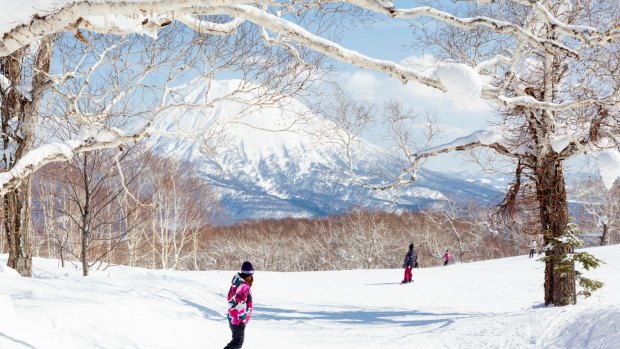
Credit: Alamy
I thought snow was supposed to be as hard as bitumen before my first snowboard trip to Japan in the early 2000s. I'd learnt to ride during a lean season in Australia, scraping raw my knees and elbows. Now I'm on my way to Niseko on the island of Haikkaido, the snowiest ski resort on Earth. Outside my mini-van, the snow's piled head-high; and a stiff breeze is bringing snow across the Sea of Japan from Siberia. Tiny wooden homes line the roads, cars are snowed in for the winter: locals try to dig them out with shovels but the snow is falling faster than they can clear it. Then I'm in Niseko and no one speaks a word of English; eventually I track down my lodge, where I'll find the only Australians. I find a riding buddy, and we grab a chairlift to the top. I strap myself into my snowboard, but I'm stuck, armpit-deep in soft powder snow. How do I do this? "Just lean back," I'm told. I struggle to my feet (there's nothing to grip) – and when I'm up, gravity takes me. As I gain more speed, I float, like I'm riding a hover-board. It's like the time I sky-dived, that same weightlessness … like there's nothing below me but air. I'm leaning back so hard that my right thigh turns to stone, but I don't register the discomfort, for I'm flying through clouds, squealing like a small child.
There's no apres ski in Japan yet (don't worry, it'll come) to celebrate. But there is nude communal bathing. We drive to an onsen (volcanic hot springs), through a fairy land of farmhouses and ryokan inns. I strip, and sit beside local men on tiny, pink plastic chairs, scrubbing ourselves raw with soap. We're outside by a hot spring where it's minus 20 degrees, but the water's 40. I stretch my arms out past the falling snow into the night sky and it's like I'm flying through outer space. And then I'm trudging through town in knee-deep snow, trying to keep my balance – tipsy on local whisky and Sapporo Draught, my stomach full of smoky yakatori – and humungous snowflakes the size of my face fall, suffocating me. I know I just have to find my way home (but who made all these street signs in Japanese?) and there's going to be even deeper, softer, drier snow to ride tomorrow. There will be 17 winters after this one – many spent traipsing through ski towns across other continents of the northern hemisphere – there will be prettier mountains, bluer skies and I'll learn to ride down mountains a whole lot faster; but nothing captures the joy of travelling in winter more than that very first taste of snow abroad.
NORTHERN THAILAND
BY JULIE MILLER
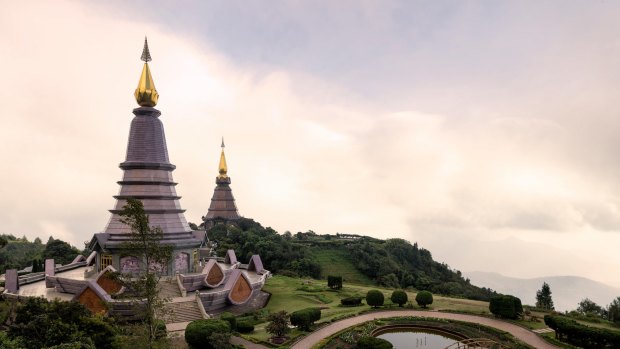
Credit: Alamy
It's the coldest morning of the year, and the locals are barely coping. Sales of hoodies have gone through the roof, faces are shrouded behind balaclavas as they shiver by on motorcycles, and all anyone can talk about is How. Damn. Cold it is.
The temperature? An unthinkably frigid 13 degrees.
But this is Thailand, the tropical paradise renowned for its perpetually steamy weather, where thongs are standard-issue footwear and jackets rarely required.
In the kingdom's north, however, the winter months of November to February can be deceptively cool, with night-time temperatures dropping into single figures – even below zero – on rare occasions.
The lowest recorded temperature, minus five degrees, was recorded on December 21, 2017 at Thailand's highest mountain, Doi Inthanon. Thai tourists flock to the peak, 60 kilometres from Chiang Mai, over the New Year period to gawk at early-morning dustings of frost.
Closer to the Myanmar border in the Golden Triangle, the highland region of Doi Tung reminded the current king's grandmother, Princess Srinagarindra, so much of her former home in Switzerland that she chose it as a retreat, building a Swiss-style teak chalet among the pine forests in 1987.
Resplendent with baskets of hanging geraniums, and surrounded by formal rose and dahlia gardens, the Doi Tung Palace now forms the centrepiece of the Doi Tung Development Project, 15,000 hectares of sustainable forest and coffee plantations established by the beloved "Angel Princess" to improve the quality of life for hill tribes. Close your eyes as your wander through these delightful grounds, and you can almost hear the sounds of cow bells and yodelling – a little slice of Europe in the middle of south-east Asia. Almost.
Dressing in layers, however, is the key to enjoying northern Thailand's dry season, with daytime temperatures hovering around 30 degrees. This is undoubtedly the best time to visit Chiang Mai – the days are dry and warm, evenings crisp and comfortable for sleeping, and the skies a sparkling blue, unlike the dreaded pre-monsoonal months of March and April, when the city is shrouded with toxic haze attributed to illegal crop fires.
This is when the legendary, laid-back Chiang Mai lifestyle comes into play; days are spent at a spa or lazing around a pool, before hitting the streets as the temperature drops, strolling through its Walking Street market or cradling an ice-cold Chang beer as you watch the passing parade, protected from the evening chill by a light wrap. Surely winter doesn't get much better than this.
SNOWSTORM IN NEW YORK
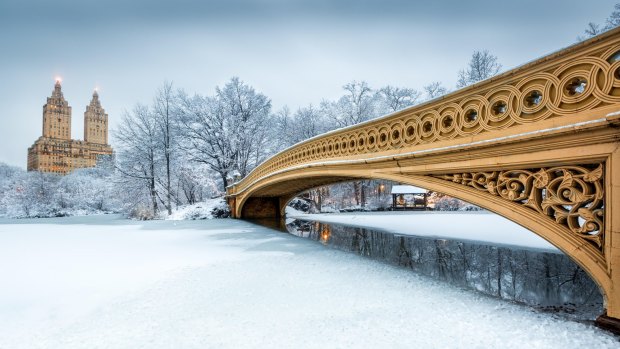
Credit: Alamy
BY UTE JUNKER
The first few flakes were almost an anti-climax. The snow clouds, grey and big-bellied, had been looming for so long that when the first flakes came down – tiny things that melted before they hit the ground – we barely noticed them, intent as we were on our quest to find a particularly out-of-the-way bar.
Weather has a way of settling in, however. When we emerged later that night, warmed by several rounds of red wine, it was well and truly snowing. We slept; the snow did not. We awoke in the morning to a city that had been transformed. The runners in our group came back with ice-crusted extremities; when we set out for breakfast, snow was sitting inches-thick on every available surface, from parked cars to Starbucks signs. And still it kept falling.
It seemed a wonderful way to end a memorable visit. We had come from cities scattered around the world to hang out together, catch some shows, do some shopping, drink some wine. I'd even scored an upgrade to a suite; no small blessing in a city of pocket-sized hotel rooms. And now – the icing on the cake, if you will – mounds of snow had softened the city's sharp edges, turning skeletal trees into elegant ornaments, straight-edged buildings into wedding cakes.
And still the snow fell. As the days went on, we moved from delight to debate. More big dumps were promised. Commentators started speculating not on whether but when the airports would shut down. Those of us who had to be home by a set date started to fret.
I was not one of them. For once, I had no pressing reason to return home. If my flight was cancelled, I figured I'd enjoy a few more bites of the Big Apple. Even when the first of my friends left a day early, getting out while the going was good, I remained relaxed – until I realised that, if I got stranded here, I would probably have to relinquish my suite. That would be a less-than-glamorous end to a near-faultless experience.
Luck was with me, however. One phone call established that my flight was indeed cancelled, and I would be in town an extra two days. A second call confirmed that the hotel was willing to let me stay in the suite. I grabbed the last friend that was still in town and headed back into the still-falling snow to celebrate the happy end to my winter's tale.
Sign up for the Traveller newsletter
The latest travel news, tips and inspiration delivered to your inbox. Sign up now.